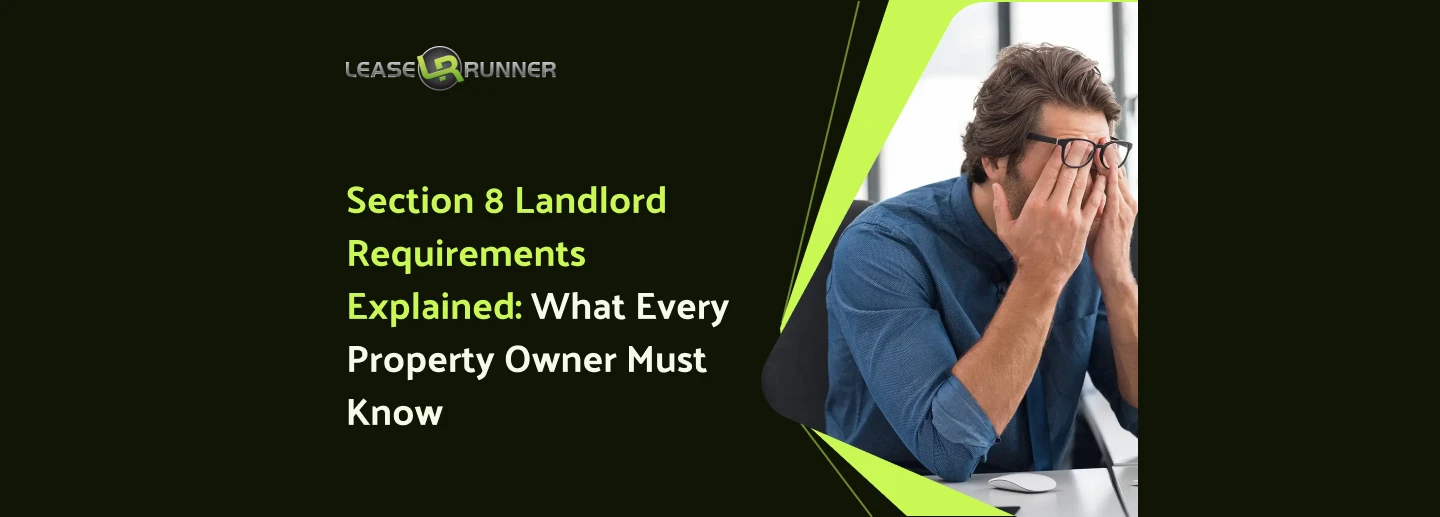
How do landlords verify employment? They should, and most experienced ones do. Employment verification is one of the key steps in screening tenants because it confirms whether they can realistically afford your rental. This article will explain the different methods landlords use to verify employment and offer practical tips to help you screen tenants with confidence!
What is Employment Verification?
Employment verification is the process of confirming that a rental applicant is actually working where they say they are and earning enough to comfortably afford the property. This can be done by reviewing documents like recent pay stubs or job offer letters, or by contacting the employer directly.

Employment verification is about one simple thing: trust but verify. While many applicants are honest, some may exaggerate their income or job status. Employment verification for apartment or other types of rental helps you avoid unpleasant surprises later, like bounced rent checks or tenants who ghost after the first month.
Why Verifying Employment is Crucial for Landlords
Knowing why employment verification matters can change how you approach tenant screening.
Ensuring Tenants Can Afford the Rent
Rent is often the biggest bill people pay each month, so it’s important to confirm that your tenant actually has the income to cover it. Just seeing a number written on an application isn’t enough. You want proof.
Let’s say that someone claims they make $5,000 a month. But without documentation or verification, there’s no guarantee that’s accurate. They might’ve lost their job last week, or they could be freelancing sporadically with no stable income.
Verifying employment ensures the numbers match reality. It helps you avoid awkward (and expensive) situations later (like tenants falling behind on payments or breaking the lease early because they’re short on funds).
Reducing the Risk of Non-payment
Late rent directly affects your cash flow. And chasing down money, sending notices, or going through eviction processes eats up time and money.
Employment verification reduces that risk by giving you insight into a tenant’s ability to consistently pay. Someone with steady, long-term employment is statistically much less likely to default than someone who’s job-hopping or recently unemployed.
How Do Landlords Verify Employment? A Step-by-Step Guide

Verifying employment doesn’t have to be complicated, but doing it right makes the process easier. Let’s check our guide!
Step 1: Ask for Proof of Employment from the Tenant
Start by requesting standard documents, like:
- Recent pay stubs (at least two)
- An employment offer letter (for new hires)
- A W-2 or tax return (for self-employed applicants)
- Bank statements (to support income claims)
These give you real data to work with—dates, amounts, consistency—and they’re easy for tenants to provide.
Step 2: Contact the Employer
Once you have the employer’s contact details, give them a quick call or send an email. You should ask for some basic information:
- Is [Applicant Name] employed there?
- What’s their position?
- Is it full-time or part-time?
- How long have they worked there?
Keep it professional and respectful. Many companies won’t share salary details, but just confirming that the tenant works there and holds a steady position is often enough.
Step 3: Use a Third-Party Screening Service
Some landlords use third-party services to produce tenant screening reports more efficiently, especially if they manage multiple properties or rent remotely.
LeaseRunner was created to simplify this process for landlords like you. Our tenant background screening services include thorough employment verification as a key part of our comprehensive reports.
We take care of contacting employers, verifying income, and confirming job status, all done securely. You don’t need to chase down pay stubs or make awkward phone calls to HR departments. Using LeaseRunner not only saves you valuable time but also reduces your risk of renting to tenants who can’t afford your property.
2 Common Methods of Employment Verification
Landlords usually rely on two trusted methods, manual and automated, to verify employment. Each has its strengths and fits different situations.
Method 1: Manual Verification
Manual verification is the traditional route that most landlords start with. It involves two main steps:
- Documentation Review: You ask tenants to provide proof of employment for rental, like recent pay stubs, employment letters, or W-2 forms. These documents show not only that they have a job but also give clues about income consistency and job length.
- Direct Employer Call: After reviewing the paperwork, some landlords call the tenant’s employer to confirm the details. A quick conversation with HR or a manager can verify job status, position, and duration. This adds an extra layer of assurance beyond the paperwork.
Manual verification takes more time and effort but gives you direct control over the process.
Method 2: Automated Verification
Technology has made employment verification easier than ever. Automated verification services, like LeaseRunner’s income and cash flow verification, collect and confirm employment and payroll deposits data digitally. It’s often straight from employer databases or verified sources.
This method is faster and can handle multiple applications at once, ideal for landlords managing several properties or who prefer a hands-off approach. Automated verification reduces errors and helps you avoid forged documents.
Manual vs. Automated Verification: Which Is Better?
Both manual and automated verification have their pros and cons. The choice depends on your rental business size, how much time you can dedicate, and the level of detail you want. In many cases, combining both methods offers the best balance.
Questions to Ask Employers During Employment Verification

The way you approach this conversation can affect the information you get and how professional you appear. Here are some common questions to ask during employment verification:
When Reaching Out
Your initial questions serve as an opener to establish context and build rapport. Start with clear, polite questions like:
- "Hello, I’m calling to verify employment for [Applicant Name]. Is this a good time to talk?"
- "Can you confirm if [Applicant Name] is currently employed with your company?"
- "Would you be able to confirm their job title and employment dates?"
These questions set a respectful tone and prepare the employer for more detailed questions.
When Gathering Standard Verification
Once the door is open, it’s time to gather the key details you need for your screening:
- "Is their position full-time or part-time?"
- "How long have they been employed there?"
- "Can you confirm their current salary or hourly wage?" (Note: Some employers may decline to share salary details, so be prepared for that.)
- "Has their employment status changed recently?"
- "Are you aware of any upcoming changes to their employment?"
These questions help verify the tenant’s job stability and income.
Confirm job status and income instantly without awkward calls or fake documents. Screen smarter and rent with confidence.

Stop Guessing—Start Verifying
How Should Landlords Verify Self-Employed Tenants
Verifying employment is pretty straightforward when a tenant works a 9–5 job. However, what happens when your applicant is self-employed? These tenants are becoming more common, and while they can be excellent renters, you’ll need to approach verification a bit differently.
Acceptable Proof of Income
Self-employed tenants may not have W-2s, but they can absolutely prove their income. Here are the most accepted and useful documents you can request:
- Recent tax returns (typically 2 years): These show overall earnings and can help you see if your business is growing or declining.
- Bank statements: Look for consistent deposits from clients or customers, not just the balance.
- Profit and loss statements (P&L): This gives a clear picture of monthly revenue versus expenses.
- Invoices or contracts: Especially helpful for freelancers or contractors with repeat clients.
- CPA or accountant letters: A letter confirming the tenant’s self-employment status, along with an income letter, adds credibility.
- Business license (if applicable): Helps confirm their work is legit and registered.
Ideally, ask for a combination, at least two or three of these documents. You want a paper trail that paints a picture of stable, ongoing income.
Evaluating Income Stability
Getting the documents is one thing; knowing how to interpret them is another.
- Consistent deposits: Irregular income may be fine if it averages out, but long dry spells can be risky.
- Seasonal trends: Some self-employed folks make most of their income in certain months. Do they have savings to carry them through lean times?
- Client diversity: One client paying them $4,000/month? What happens if that contract ends?
- Growth: Compare two years of tax returns. Are earnings increasing, holding steady, or declining?
A self-employed tenant with solid documentation and a good explanation of their business can be just as reliable as any W-2 employee.
How to Spot Fake Pay Stubs and Employment Letters

Unfortunately, fake documents are more common than landlords like to believe. With a few clicks, anyone can generate professional-looking pay stubs or write a convincing employment letter. Either way, it’s your job to spot the fakes before they cause problems.
Notice the Common Red Flags
An experienced landlord should know what to look for:
- Too perfect: $5,000.00 on the dot, every month? Real incomes fluctuate.
- Inconsistent formatting: Pay stub uses three different fonts. That’s a sign it may be doctored.
- No contact details: A legitimate employment letter should include full company info: phone, address, official email.
- Generic or vague language: Real employers usually mention job title, start date, supervisor, etc.
- No taxes or deductions: A stub showing just gross pay and nothing else? Not legit.
- Overuse of buzzwords: Phrases like “prestigious role” or “valued team member” instead of real job responsibilities.
Cross-Check with Public Info
This part is easy and surprisingly effective. Don’t take the applicant’s word for it, do your own research:
- ABC Inc. is the company they claim to work for. Does it exist? Do the contact details match what’s on the documents?
- Look up the employer contact on LinkedIn or the company’s website. Are they real? Do they work in HR or management?
- Check the domain of email addresses. Real companies don’t use Gmail or Yahoo for HR business.
If anything doesn’t check out, it definitely means more questions need to be asked.
Point Out Tricks Used by Dishonest Tenants
Tenants who are trying to hide something often get creative. A few shady tactics you should be aware of are:
- Online pay stub generators: There are dozens of websites that let people create their own pay stubs for a small fee.
- Fake email domains: Anyone can buy a cheap domain like “@abcemployment.com” to make a fake HR email look real.
- Friends posing as bosses: You call the employer and talk to someone pretending to be their manager, but it’s actually just a buddy.
- Photoshopped documents: Changing names, dates, or income figures on old pay stubs or offer letters.
Common Mistakes to Avoid When Landlords Verify Employment
Whether you're in a hurry to fill a vacancy or just assume the tenant seems trustworthy, these common mistakes can come back to bite you.
Skipping Verification for Short-Term Leases
It’s easy to think, “They’re only staying for three months, what’s the risk?”. Remember, short-term tenants can cause long-term problems.
- They might fall behind on rent, leaving you with a costly eviction process.
- You might never recover the money before it disappears.
- Short stays don’t guarantee low wear and tear—some of the worst damage happens fast.
Short lease or not, always verify employment.
Failing to Use Written Consent Forms
Before contacting any employer or third-party service, you need the tenant’s written consent. Many standard rental applications include a clause granting permission for employment and background checks. Still, it’s a good idea to:
- Double-check that the clause is clear and signed.
- Keep a copy for your records.
- Let the applicant know that you’ll be verifying the information they provide.
Without written consent, employers often won’t release any details.
Rushing the Process or Taking Claims at Face Value
You’re busy. The unit is vacant. It’s tempting to skip steps or take their documents at face value. But rushing screening is one of the most common mistakes landlords make.
Taking a little extra time to verify employment, call employers, or use a service like LeaseRunner can save you from serious issues. So, would you rather spend 15 minutes double-checking documents, or 3 months trying to evict someone who stopped paying rent?
Trusting Completely Pay Stubs
Pay stubs are one of the most commonly faked documents in rental applications. You can find online generators that spit out realistic-looking stubs in minutes, no questions asked.
Do a quick gut check:
- Do the numbers make sense for their job title and industry?
- Do the deposits on their bank statement line up with what the stubs say?
- Does the company actually exist, and have you verified that someone really employs them?
A few extra minutes of verification could save you months of missed rent.
Not Following Up on Vague or Incomplete Info
In some cases, an applicant lists “Self-employed” or “Works at a marketing agency,” but leaves out critical details like business name, income range, or supervisor contact. Rather than brushing it off, see it as a red flag that needs clarification.
Don’t hesitate to follow up with questions:
- “What’s the name of your business?”
- “Can you provide a client or CPA reference?”
Conclusion
Do landlords verify employment? Absolutely, and for good reason. It’s one of the most reliable ways to ensure a tenant can consistently meet their rent obligations. With tools like LeaseRunner to help automate the verification process and a bit of know-how, verifying employment doesn’t have to be a hassle anymore!
FAQs
Q1. Do apartments call your employer?
Yes, many apartments do call your employer as part of the employment verification process. Typically, they’ll either call your HR department or the supervisor listed on your application. Some landlords also use third-party screening services that verify your employment automatically, without a phone call.
Q2. How to check tenant references?
Landlords usually check tenant references by calling the previous landlord(s) listed on the rental application. This quick phone call helps verify your rental history, payment habits, and general behavior as a tenant. Some landlords may also send a reference form via email or request written feedback.
Q3. What questions can you ask a previous landlord?
When calling a previous landlord, it’s important to ask questions that go beyond “Did they pay rent?” You’re looking to get a sense of how the tenant behaved. We recommend the best ones:
- Did the tenant pay rent on time?
- Did they give proper notice before moving out?
- Were there any complaints or issues during their lease?
- Did they take good care of the property?







